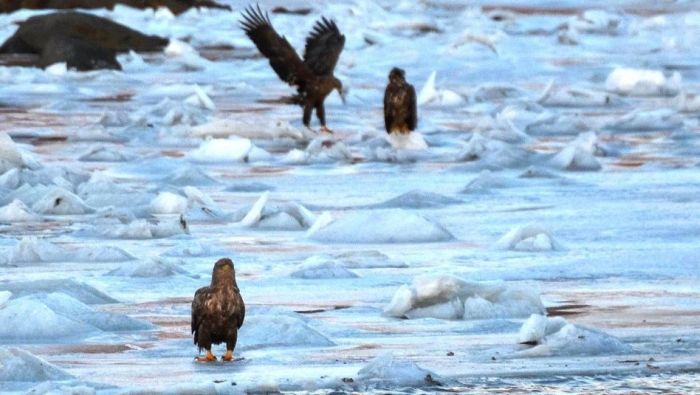|
|
Shoal Of Herring Frozen After A Harsh Wind, Norwegian Bay, Qikiqtaaluk Region, Nunavut, Canada, Arctic Ocean
|
The species of Clupea belong to the larger family Clupeidae (herrings, shads, sardines, menhadens), which comprises some 200 species that share similar features. These silvery-coloured fish have a single dorsal fin, which is soft, without spines. They have no lateral line and have a protruding lower jaw. Their size varies between subspecies: the Baltic herring (Clupea harengus membras) is small, 14 to 18 centimetres; the proper Atlantic herring (C. h. harengus) can grow to about 46 cm (18 inches) and weigh up 700 g (1.5 pounds); and Pacific herring grow to about 38 cm (15 inches).
Life cycle
At least one stock of Atlantic herring spawns in every month of the year. Each spawns at a different time and place (spring, summer, autumn and winter herrings). Greenland populations spawn in 0–5 metres (0–16 ft). North Sea (bank) herrings spawn at up to 200 metres (660 ft) in autumn. Eggs are laid on the sea bed, on rock, stones, gravel, sand or beds of algae. "...the fish were darting rapidly about, and those who have opportunity to see the fish spawning in more shallow water ... state that both males and females are in constant motion, rubbing against one another and upon the bottom, apparently by pressure aiding in the discharge of the eggs and milt" (Moore at Cross Island, Maine).
|
|









